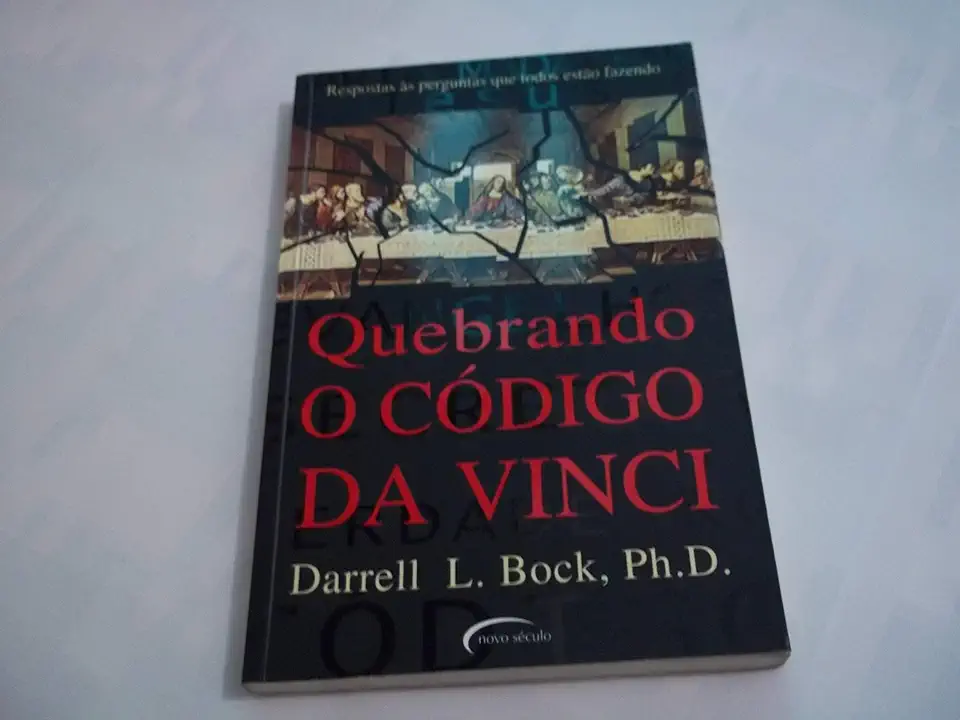
Breaking the Da Vinci Code - Darrell L. Bock
Breaking the Da Vinci Code: A Scholarly Response to the Bestselling Novel
In his book Breaking the Da Vinci Code, Darrell L. Bock, a leading New Testament scholar, offers a thorough and persuasive critique of Dan Brown's bestselling novel. Bock argues that Brown's book is filled with historical inaccuracies, misinterpretations of the Bible, and unfounded speculation. He also demonstrates that Brown's central thesis—that Jesus was married to Mary Magdalene and had children—is not supported by any credible evidence.
Historical Inaccuracies
One of the most striking things about The Da Vinci Code is its numerous historical inaccuracies. For example, Brown claims that the Knights Templar were the guardians of the Holy Grail and that they were wiped out by the Catholic Church because they knew too much about Jesus's true identity. However, there is no evidence to support either of these claims. In fact, the Knights Templar were a real organization, but they were not involved in any kind of conspiracy to hide the truth about Jesus. They were simply a military order that fought to protect the Holy Land during the Crusades.
Another historical inaccuracy in The Da Vinci Code is Brown's claim that the Catholic Church suppressed the Gospel of Mary Magdalene because it contained information about Jesus's marriage to Mary Magdalene. However, there is no evidence that the Gospel of Mary Magdalene ever existed. In fact, the earliest known reference to this gospel dates from the 4th century AD, and it does not mention anything about Jesus's marriage.
Misinterpretations of the Bible
In addition to its historical inaccuracies, The Da Vinci Code also contains a number of misinterpretations of the Bible. For example, Brown claims that the Bible is a work of fiction that was written by early Christians to promote their own religious agenda. However, there is no evidence to support this claim. In fact, the Bible is a collection of ancient texts that were written by a variety of authors over a long period of time. These texts are not works of fiction; they are historical documents that record the events of Israel's history and the teachings of Jesus and his apostles.
Another misinterpretation of the Bible in The Da Vinci Code is Brown's claim that the Last Supper painting by Leonardo da Vinci contains hidden clues about Jesus's true identity. However, there is no evidence to support this claim. In fact, da Vinci's painting is simply a depiction of the Last Supper, as described in the Bible. There are no hidden clues or symbols in the painting.
Unfounded Speculation
In addition to its historical inaccuracies and misinterpretations of the Bible, The Da Vinci Code also contains a great deal of unfounded speculation. For example, Brown claims that Jesus was actually a pagan god who was later turned into a historical figure by early Christians. However, there is no evidence to support this claim. In fact, the evidence suggests that Jesus was a real person who lived in Palestine during the 1st century AD.
Another unfounded speculation in The Da Vinci Code is Brown's claim that the Holy Grail is actually Mary Magdalene's tomb. However, there is no evidence to support this claim. In fact, the Holy Grail is a legendary object that has never been found.
Conclusion
In conclusion, Breaking the Da Vinci Code is a valuable resource for anyone who is interested in learning more about the historical inaccuracies, misinterpretations of the Bible, and unfounded speculation in Dan Brown's bestselling novel. Bock's book provides a thorough and persuasive critique of Brown's work, and it demonstrates that there is no credible evidence to support his central thesis.
Enjoyed the summary? Discover all the details and take your reading to the next level — [click here to view the book on Amazon!]